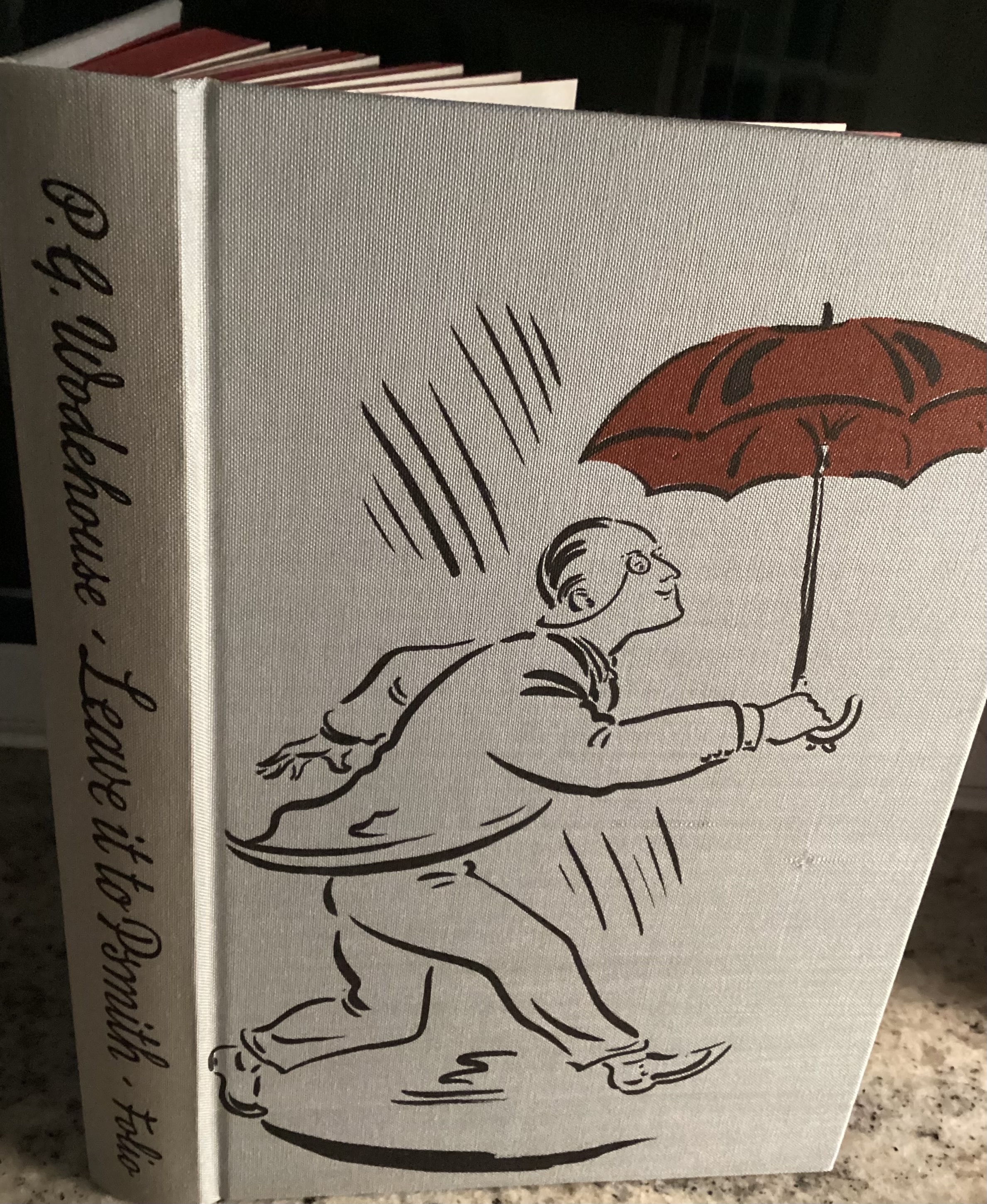Inspiring Older Readers
 posted on 28 Apr 2024
posted on 28 Apr 2024
Leave it to Psmith by P.G. Wodehouse
Leave it to Psmith by P.G. Wodehouse is the final outing for Rupert Psmith, the first fully-formed embodiment of the true spirit of the mature Wodehouseian character – effortlessly upper-class in temperament but without two shillings to rub together. Witty, irresistible, floating through situations with sang-froid and social aplomb, Psmith emerges from Wodehouse’s earlier school fictions where he was initially a peripheral figure and immediately takes centre stage.
His first appearance in the ‘Mike Jackson’ series is, Benny Green agues in his foreword to the Folio Society edition of Leave it to Psmith, a moment of significance in the Wodehouse oeuvre – the moment Wodehouse becomes a true writer of comic genius:
“Here for the very first time, Wodehouse is indulging freely in his gifts for pastiche and persiflage. For once, the plot is forgotten as the words begin to dance.”
And Psmith was indeed a hit with the reading public – he entirely takes over the Mike Jackson books pushing the eponymous hero to the margins. But despite this success, Leave it to Psmith, turns out to be the last appearance of this compelling comic character.
Before talking more about the book and it’s absurdly complicated and convoluted – even farcical – plot, just a quick word is necessary about the name, Psmith (which you may need if you’re unfamiliar with the Wodehouse world). Psmith’s real name is, naturally, Smith - but, conscious that this might be a totally unremarkable surname, the young man decides he’ll add a silent P to the front of that potentially dull name. He will, several times introduce himself as Smith, spelled with a silent P at the front. And no-one in Wodehouse-world bats an eyelid!
So, what of the plot? Well, it might well be beyond me to condense such a tumbling and twisting yarn any better than Sam Jordison did for The Guardian back in 2014:
“This book boasts a plot complicated and farcical even by Wodehouse's standards. We can expect dark conspiracies, missing items, frantic attempts to put those items in the right hands, trouble with flowerpots, rages from Blandings' head gardener Angus McAllister, absent-mindedness from Lord Emsworth and best of all a visit from literary types to the castle. One can only expect that these latter will be ridiculous...”
Wodehouse fans will be delighted to see the reference to Blandings in the above quotation and the appearance of Clarence, the ninth Earl of Emsworth is, from my point of view, a great bonus. As Psmith steps out of the Wodehouse gallery, others step in – but as Wodehouse himself says:
“The character of Psmith is the only thing in my literary career which was handed to me on a plate…..thus enabling me to avoid the blood, seat and tears inseparable from an author’s life. Lord Emsworth, Jeeves and the rest of my dramatic personae had to be built up from their foundations, but Psmith came to me ready made.”
Ultimately, Psmith has to leave because Wodehouse simply writes him into a dead end. Asked why he this hugely popular character has no further part to play, Wodehouse confesses:
“The answer is simple. I can’t think of a plot.”
I’m rather glad that Psmith shines brightly for a handful of books before exiting because by the end of Leave it to Psmith he has become, frankly, rather tiresome and Wodehouse is clearly ready for the new challenges of Blandings, Emsworth, Jeeves and Wooster. Bring them on.
Paperback copies of this book – and the Folio Society copy featured here, are easy enough to find and won’t cost you over a tenner on the second-hand market.
Terry Potter
April 2024